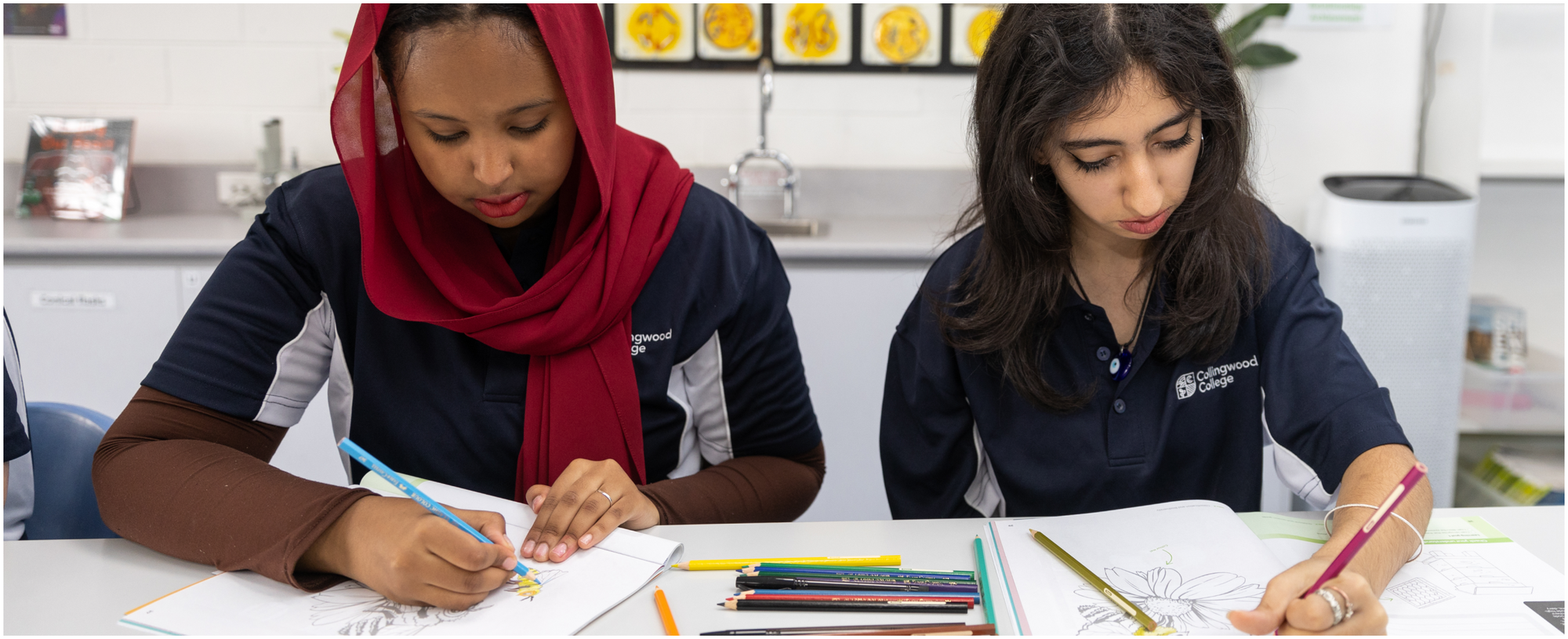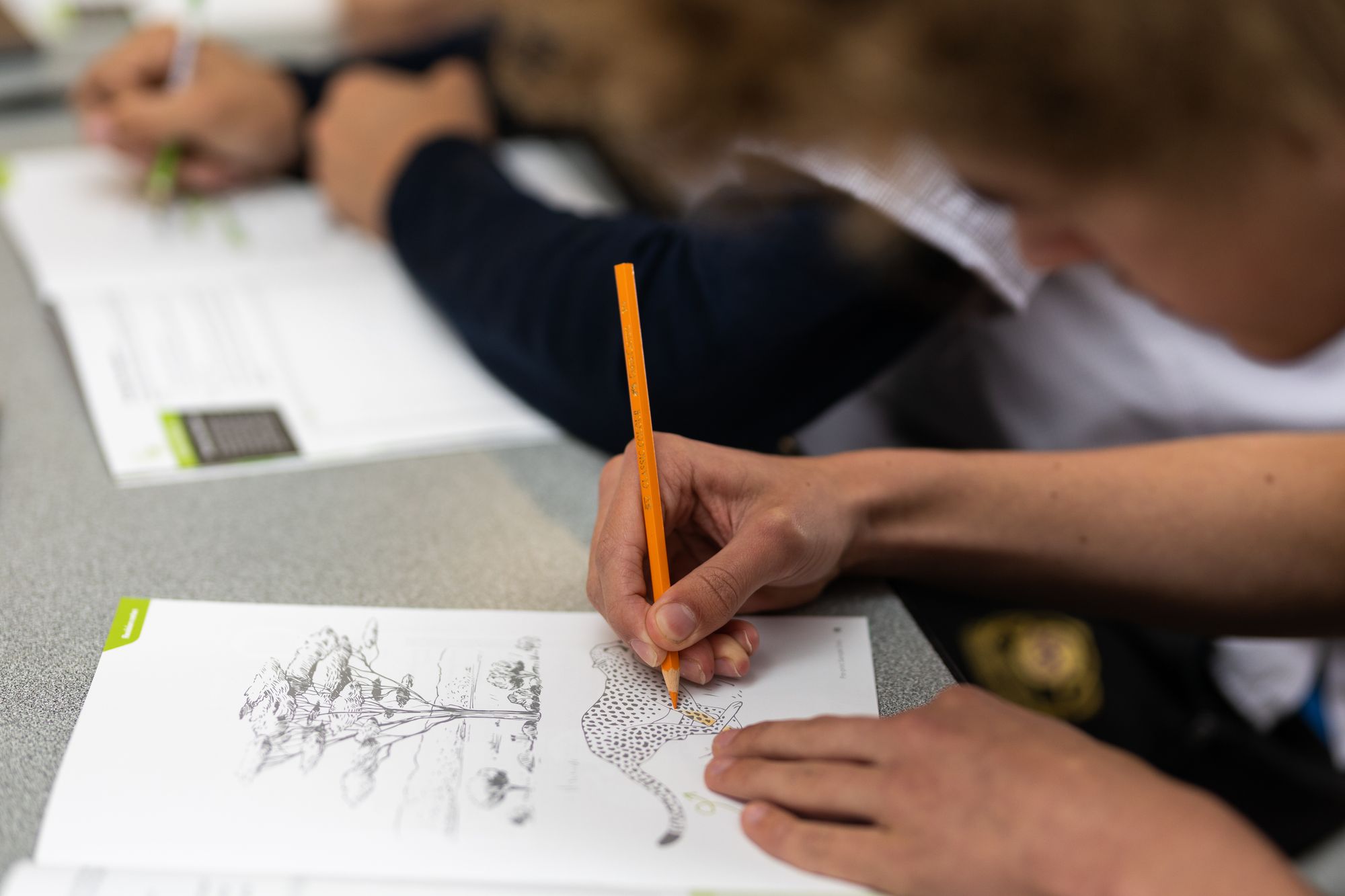Mindful colouring to support student wellbeing
Sharpen your pencils and your mind!

Mindfulness is something we’ve heard a lot about during the last few years. It’s all about focusing attention on your current activity (Brown & Ryan, 2003) and is shown to be positively related to psychological health and emotional well-being (Keng, Smoski, & Robins, 2011).
Mindfulness-based practices have been adopted in many schools globally, and these interventions are shown to reduce anxiety, depression and stress in children and adolescents (Kallapiran, Kirubakaran, & Hancock, 2015). Unfortunately, such interventions are often costly and demanding to implement (Carsley & Heath, 2018). The good news is that the simple act of colouring has been shown to significantly increase mindfulness and significantly reduce anxiety in students (ibid.)
Mindful colouring is broadly beneficial for students
Mindful colouring isn’t just about well-being, though. Research has shown that there are cognitive, social and psychological benefits for students, including improvements in working memory, attention, creativity, academic performance, mind wandering, stress and coping, resilience, affect, mood, anxiety, fatigue, emotional regulation, social and relationship skills, self-concept and self-esteem (Meiklejohn et al.; Zenner et al, 2014). That’s an impressive list! Additional studies demonstrate that mindful colouring improves student attention and problem-solving abilities (Holt, 2019) and is positively related to cognitive performance (Keng, Smoski, & Robins, 2011).
How to use mindful colouring with your students
Every Stile unit has an accompanying physical Stile X booklet and digital revision worksheets, which contain one to two mindful colouring exercises related to the unit. We highly encourage their use to support student well-being.
- If your class sessions run for longer than 45 minutes, a 5-minute brain break for mindful colouring between activities is a great way to restore energy levels and concentration
- Use mindful colouring to settle students into class after break time
- Fast finishers can use mindful colouring for short periods of time while they’re waiting for others to complete a task
- Encourage students to complete any mindful colouring they started in class as part of a 20-minute study break at home. This is especially effective for reducing anxiety in the lead-up to a test or exam (Carsley & Heath, 2018)
So, what are you waiting for? Get students colouring in Stile's revision and mastery resources.

References
Brown, K., & Ryan, R. (2003). The benefits of being present: Mindfulness and its role in psychological well-being. Journal
of Personality and Social Psychology, 84(4), 822–848. doi:10.1037/0022-3514.84.4.822
Carsley, D., & Heath, N. (2018). Effectiveness of mindfulness-based coloring for test anxiety in adolescents. School Psychology International, 39(3), 251–272. doi:10.1177/0143034318773523
Kabat-Zinn, J. (2003). Mindfulness-based interventions in context: Past, present, and future. Clinical Psychology: Science and Practice, 10(2), 144–156. http://dx.doi.org.proxy3.library.mcgill.ca/10.1093/clipsy/bpg016
Keng, S.-L., Smoski, M. J., & Robins, C. J. (2011). Effects of mindfulness on psychological health: A review of empirical studies. Clinical Psychology Review, 31(6), 1041–1056. doi:10.1016/j.cpr.2011.04.006
Kallapiran, K., Koo, S., Kirubakaran, R., & Hancock, K. (2015). Review: Effectiveness of mindfulness in improving mental health symptoms of children and adolescents: A metaanalysis. Child and Adolescent Mental Health, 20(4), 182–194. doi: 10.1111/camh.12113.
Meiklejohn, J., Phillips, C., Freedman, M. L., Griffin, M. L., Biegel, G., Roach, A., … Saltzman, A. (2012). Integrating mindfulness training into K-12 education: Fostering the resilience of teachers and students. Mindfulness, 3(4), 291–307. doi:10.1007/s12671-012-0094-5
Zenner, C., Herrnleben-Kurz, S., & Walach, H. (2014). Mindfulness-based interventions in schools—A systematic review and meta-analysis. Frontiers in Psychology, 5, 603. doi:10.3389/fpsyg.2014.00603.

